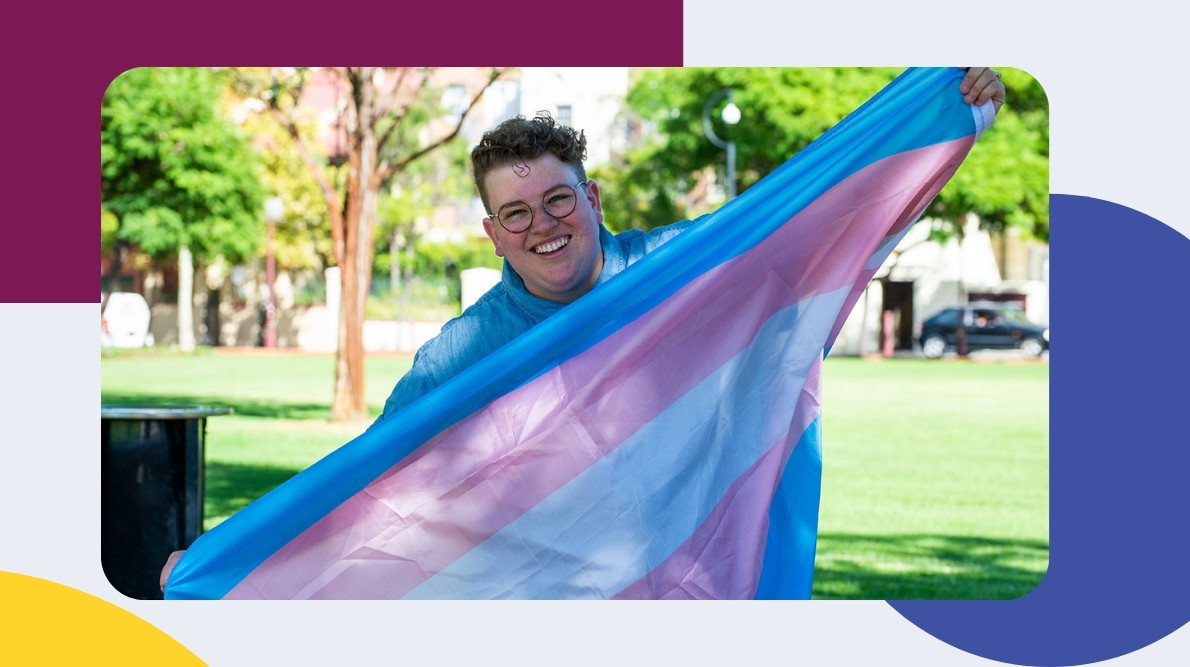Is your service safe and inclusive for trans, gender diverse and non-binary communities?
Here are some questions to ask and suggestions for how to improve inclusive practice in your organisation.
Does your service show signs of inclusion and acceptance of diversity? e.g. inclusive posters or flags
When a service displays signs of acceptance or inclusion, this is a commitment to providing inclusive care. If someone visits your practice because it claims to be inclusive and is not, this can lead to them having a negative experience.
For a range of inclusive resources, visit minus18.org.au
Does your service have inclusive facilities?
Have you considered the safety and comfort of LGBTIQA+ people in your physical space, including gender neutral toilets for staff and clients? If you provide condoms for clients to take (e.g. in bathrooms), do you also provide dams?
Are your organisational policies and procedures inclusive?
When policies and procedures are inclusive, it means they have been created and/or reviewed with the participation of LGBTIQA+ people, and they are explicitly considered in policy. For example, if a practice asks clients for their title (e.g. Mr, Mrs, Miss, Mx) but does not have an inclusive policy on this, one staff member may assume a title incorrectly. An inclusive policy makes this safer for clients and staff.
Living Proud provide coaching and consultation around creating inclusive policies and procedures. For more information, visit livingproud.org.au/policy-and-consultancy
Are your systems, processes, and forms appropriate for all clients?
Are complaints and incidents related to LGBTIQA+ inclusive practice logged in an existing system, and does organisational risk management include ensuring LGBTIQA+ cultural safety? Do intake forms contain space for listing affirmed name, pronouns, gender, and language for discussing bodies. Download our letter template for an example of an appropriate form.
NOTE: If your software package is not inclusive and cannot be replaced, you can often still implement changes to improve your client’s safety and experience, such as re-purposing an unused field to input additional client details, or utilising a notes field to provide the clinician with information such as affirmed name (e.g. if different from Medicare name) and pronouns.
Are all staff aware of inclusive processes? e.g. managing affirmed name versus Medicare name
It is important to ensure all staff are familiar with inclusive processes, including reception staff, clinical staff, and external contractors that work onsite such as Pathology. Policies and procedures should be easily accessible, and staff should be given training (see following point).
Do all staff receive appropriate, ongoing training on inclusive care for LGBTIQA+ communities?
All staff should be included in LGBTIQA+ diversity training opportunities, including reception staff, clinical staff, and external contractors that work onsite such as Pathology. Staff should receive training during their induction (with refresher training as appropriate) to ensure they know how to follow inclusive policy and procedure.
Does your workplace allow staff opportunities to learn about diversity and do staff actively take the initiative to learn?
Often trans, gender diverse and non-binary people find themselves having to educate their health professional, which can be difficult and frustrating for the client. Staff may need to ask certain questions to provide the best care in the appointment, but should also take the time to do their own research on topics they need more information about. Organisations should be proactive in providing staff with regular learning opportunities and be responsive to client feedback which indicates staff need additional training or resources to support them. Organisations should also provide resources for staff to access for their own learning e.g. links to LGBTIQA+ publications and organisations on the staff intranet.
Do staff make assumptions about other staff members or clients? e.g. their gender, genitals, sexual partners or sexual behaviours?
When we make assumptions based on observations, we can cause unintentional hurt or insult; such as assuming all trans people are binary (male or female, not non-binary), assuming all trans people want to use/are using hormones or want to have surgery, or assuming a trans person’s health issues are because they are trans or on hormones. Staff training, educational resources and workplace procedures should include emphasis on not making assumptions or relying on pre-conceived ideas about people, and strategies to provide a more inclusive client experience. To see an example of a clinical consultation which does not rely on assumptions, take a look at our inclusive consultation video.
Additional resources:
The Rainbow Tick is a national accreditation program that organisations can implement to ensure their services are safe and inclusive for LGBTIQA+ communities.
Related Resources
Language Guide: Sexual health, STIs and BBVs for trans, gender diverse and non-binary people
Downloads, Language, Professionals

